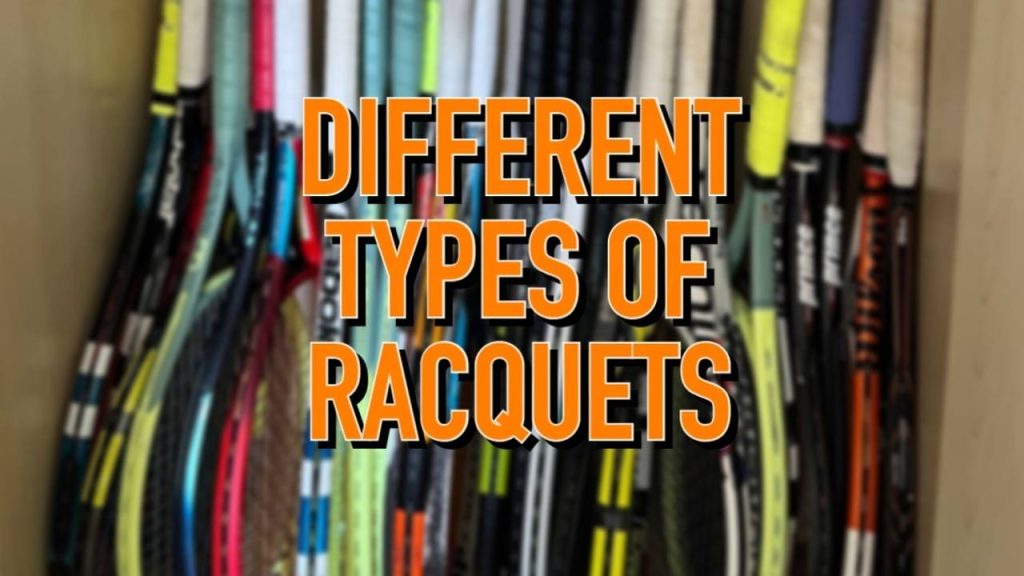There are different racquet types on the market. Here are the categories of racquets you need to know about.
Beginner racquets
Oversized racquets are made for beginners to lower-level intermediate players. Big on power and forgiveness, but NOT easy to control.
Lines of beginner racquets:
HEAD Team or Team L, Babolat EVO or BOOST, Yonex Astrel, Prince Legacy.
Player type: Players with shorter and slower swings who need a lot of help with depth and height.
You can see our recommended beginner racquets here.
Control racquets
Low on power, high on feel. It’s all about knowing where the ball is going and being able to hit small targets. These racquets suit players like Novak Djokovic.
More demanding to use and generally for advanced players that can generate their own power.
Lines of control racquets:
HEAD Radical, HEAD Gravity, Wilson Blade, Yonex Percept, Tecnifibre TF40, Volkl C10.
Player type: All-court players who like to percentage smart tennis and counter-punch at the right time.
You can see our recommended control racquets here.
Power racquets
These are high on power and forgiveness. They are generally stiff and will offer a generous energy return. These racquets suits players like Garbine Muguruza and Casper Ruud.
Lines of power racquets:
Babolat Pure Drive, Dunlop FX, HEAD Boom, Wilson Ultra, Yonex Ezone.
Player type: Player who likes to be aggressive from the back of the court and generally play with a flatter ball trajectory.
You can see our recommended power racquets here.
Spin racquets
Racquets made to increase racquet head spin and topspin potential. These racquets suit players like Rafael Nadal and Carlos Alcaraz.
Lines of spin racquets:
Babolat Pure Aero, HEAD Extreme, Wilson Shift, Dunlop SX, Yonex VCORE, Tecnifibre TF-X1.
Player type: Players who hit with a lot of top spin and go for bigger targets.
You can see our recommended spin racquets here.
Comfort racquets
Racquets made to reduce vibrations and increase comfort. These racquets are rarely seen on the pro tour, as they sometimes lack a bit of precision for the cost of comfort.
Lines of comfort racquets:
Wilson Clash, ProKennex, Prince Phantom, Donnay.
Player profile: Players who have a history of tennis elbow or similar injuries and/or put a premium on comfort.
You can find our recommended comfort racquets here.
Precision racquets
Firm racquets made to hit small targets when you attack. This line is close to “control racquets” but offers a firmer feel overall. These racquets suit attacking players like Roger Federer and Jiri Lehecka.
Lines of precision racquets:
Wilson Pro Staff, HEAD Prestige, Babolat Pure Strike.
Player profile: Players who like to win the point quickly through attacking tennis and possibly getting to the net.
You can find our recommended precision racquets here.
Versatile racquets
These racquets bring a bit of everything, some power, some spin, some forgiveness, some control. They overlap in this category with more forgiving control racquets like the Blade 100, VCORE Pro 100, and the Dunlop CX 400 Tour.
Lines of versatile racquets:
HEAD Speed, Prince Tour, and Yonex Percept.
Player profile: All-court players who like to have a balanced response with some power and spin on tap, just not too much of it.
You can find our recommended versatile (all-rounder) racquets here.
Doubles racquets
Should doubles racquets have their own racquet types category? Yes, I think so. Many recreational players only play doubles and certain racquets work better for this category of tennis than others.
There are no specific lines for doubles racquets, but we have some doubles racquet recommendations.
You can find reviews of all the lines mentioned above in our racquet reviews category or on our YouTube channel.

